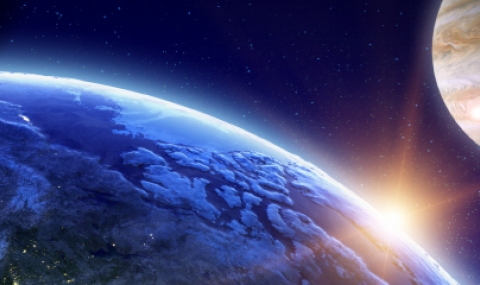The atmospheres of the giant planets exhibit some of the most striking dynamical phenomena in the Solar System such as multiple vibrant jet-streams, Earth-sized vortices and strong equatorial superrotation. A key element for explaining these phenomena is knowing the depth to which the dynamics extends on these planets. As part of NASA's Juno science team since 2009, we have developed methodology in order to use the Juno gravity measurements to determine the depth of Jupiter's dynamical atmosphere. Following early estimates for how the gravity harmonics can be used to determine the depth of the flows, particularly using the odd gravity harmonics, indeed J3, J5, J7 and J9 were measured by Juno in 2017 and allowed to determine that the jets extend down to about 3000 km. Similarly, the gravity measurements of the Cassini Grand Finale allowed determining that the depth of the flows on Saturn extend down to about 9000 km. In both cases this is the depth where the electrical conductivity becomes significant indicating that likely the magnetic field plays an important role in dissipating the flow on both planets. A key focus of our recent research is on how does the magnetic field interact with the flow. In addition we study the mechanisms driving and maintaining the multiple jets on Jupiter and Saturn, the structure and depth of the flows on Uranus and Neptune, and the vortex and interior dynamics on the giant planets.
Select publications:
- Comparison of the deep atmospheric dynamics of Jupiter and Saturn in light of the Juno and Cassini gravity measurements, Kaspi et al., 2020, Space Sci. Rev.
- Saturn’s deep atmosphere revealed by the Cassini Grand Finale gravity measurements, Galanti et al., 2019, GRL
- Measurement and implications of Saturn’s gravity field and ring mass, Iess et al., 2019, Science
- Jupiter’s atmospheric jet-streams extend thousands of kilometers deep, Kaspi et al., 2018, Nature
- Saturn's fast spin determined from its gravitational field and oblateness, Helled, R., Kaspi, Y. and Galanti, E., 2015, Nature
- Atmospheric confinement of jet streams on Uranus and Neptune, Kaspi et al., 2013, Nature
- Inferring the depth of the zonal jets on Jupiter and Saturn from odd gravity harmonics, Kaspi Y., 2013, GRL


